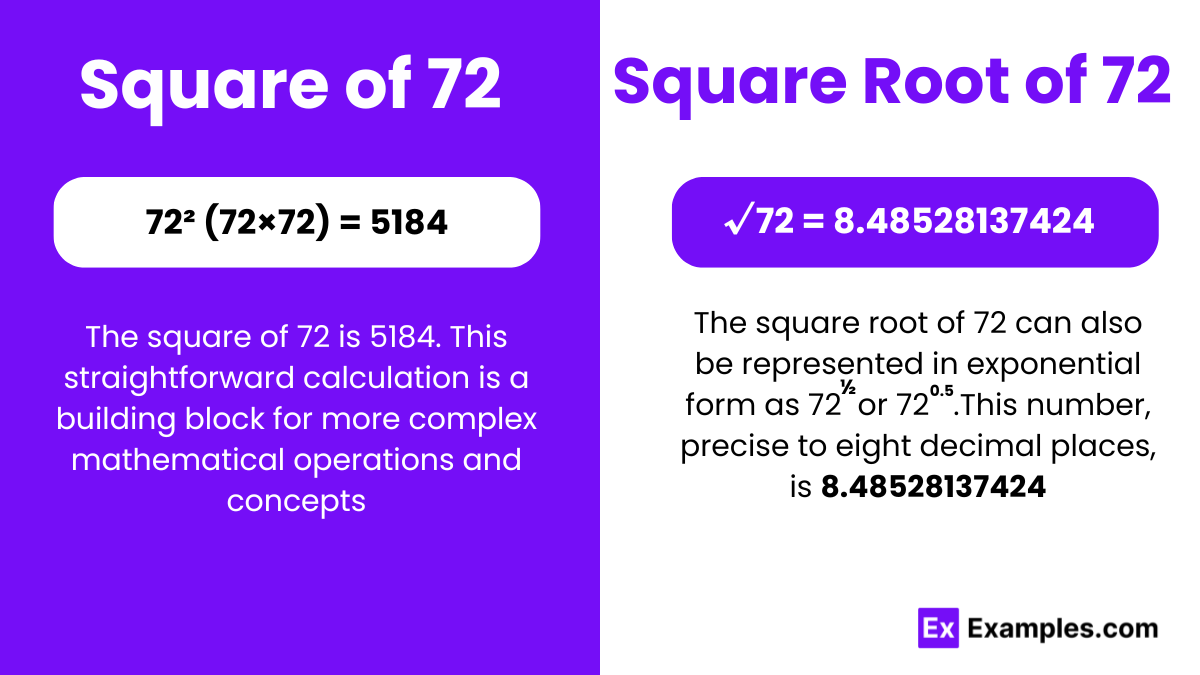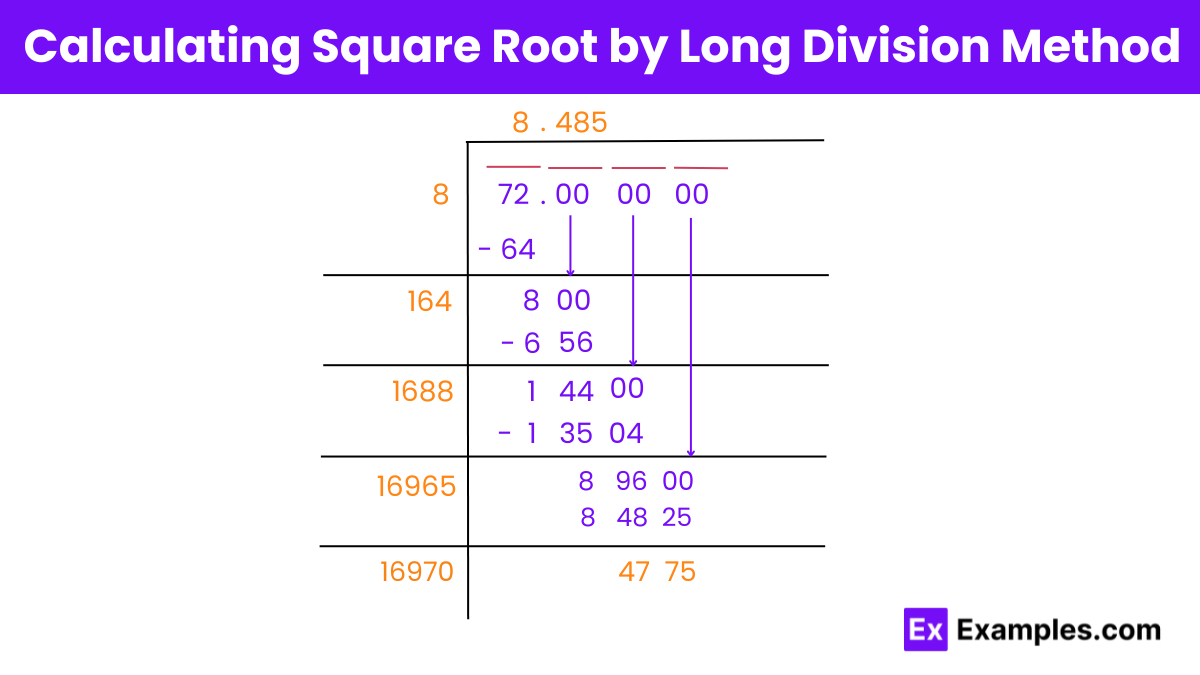What is the square of 72?
4900
5184
5185
4921

The square of 72 (72²) is calculated by multiplying 72 by itself:
72×72=5184.
So, the square of 72 is 5184.
Geometrically, if you have a square with each side measuring 72 units, the total area enclosed by the square will be 5184 square units.
Understanding the square of 72 is essential in various mathematical contexts, including geometry, algebra, and arithmetic. It finds applications in calculating areas, volumes, distances, and solving mathematical problems.
or
√72= 8.485 up to three places of decimal
The square root of 72 (√72) is an irrational number, approximately equal to 8.48528137424.
It represents a number that, when multiplied by itself, results in 72:
72≈8.4852813742472
Since 72 is not a perfect square, its square root cannot be simplified to a whole number or a simple fraction. Instead, it is a non-repeating, non-terminating decimal.
The square root of 72 finds applications in various fields such as mathematics, physics, engineering, and finance, where precise calculations are required.
Exponential Form: 72^½ or 72^0.5
Radical Form: √72
To understand why, let’s delve into the definitions of rational and irrational numbers.
Since 72 is not a perfect square, its square root cannot be expressed as a fraction of two integers. Additionally, the decimal representation of √72 is non-repeating and non-terminating. Therefore, √72 is classified as an irrational number.
The square root of 72 (√72) is irrational because it cannot be expressed as a simple fraction. In decimal form, its digits continue infinitely without repeating any pattern. This is because 72 is not a perfect square, meaning it is not the square of an integer. Therefore, the square root of 72 (√72) is classified as an irrational number, which is a fundamental concept in mathematics with implications in various calculations and theoretical contexts.
Estimation Method:
Long Division Method:
Newton’s Method:
Using a Calculator or Software:

By following these steps iteratively, the square root of 72 can be approximated using the long division method.
A perfect square is a number that can be expressed as the square of an integer. In other words, it is the product of an integer multiplied by itself. For example, 25 is a perfect square because it equals 5×5.
However, 72 cannot be expressed as the product of an integer multiplied by itself. Therefore, it is not a perfect square.
You can use methods like estimation, long division, or iterative algorithms like Newton’s method to approximate the square root of 72 manually.
The square root of 72 has applications in various fields such as mathematics, physics, engineering, and finance, where precise calculations are required.
Yes, 72 has several mathematical properties, such as being divisible by 2, 3, 4, 6, 8, 9, 12, 18, 24, 36, and 72 itself. It is also the sum of four consecutive prime numbers (13 + 17 + 19 + 23 = 72).
Text prompt
Add Tone
10 Examples of Public speaking
20 Examples of Gas lighting
What is the square of 72?
4900
5184
5185
4921
What is the square root of 5184?
68
72
70
74
Which of the following is true about the square of 72?
It is less than 5000
It is exactly 5000
It is more than 5000
It is exactly 6000
If you take the square root of 72 and then square the result, what number do you get?
72
144
156
182
What is the approximate square root of 72 to the nearest whole number?
7
8
9
10
Which of the following operations will give you 72 when starting from its square root?
Multiplying the square root by itself
Adding the square root to itself
Subtracting the square root from itself
Dividing the square root by itself
What is the square of 72 minus 144?
5040
5044
5048
5184
If you add the square root of 72 to itself, what is the approximate result?
16
17
18
19
What number must be squared to get a result close to 72?
7
8
9
10
What is 72 divided by its square root?
8
9
10
11
Before you leave, take our quick quiz to enhance your learning!

